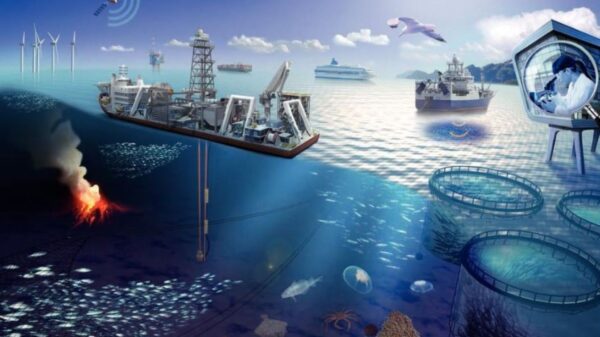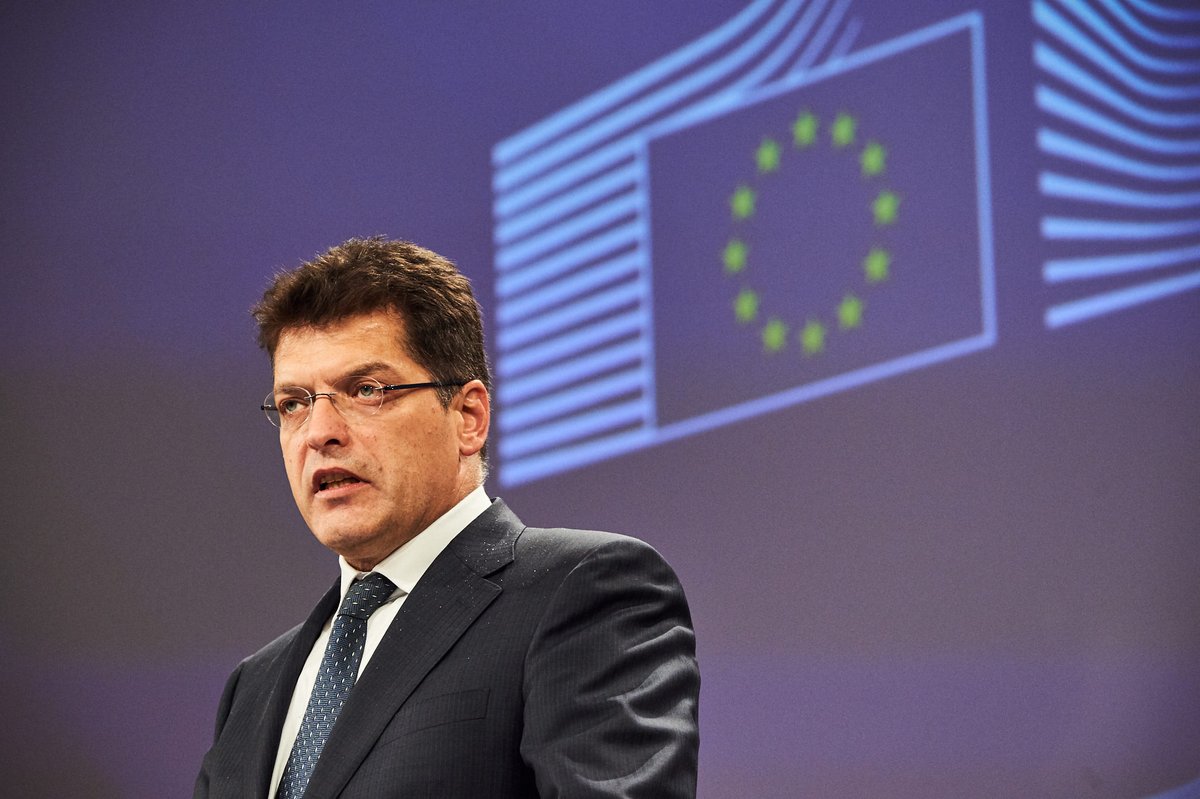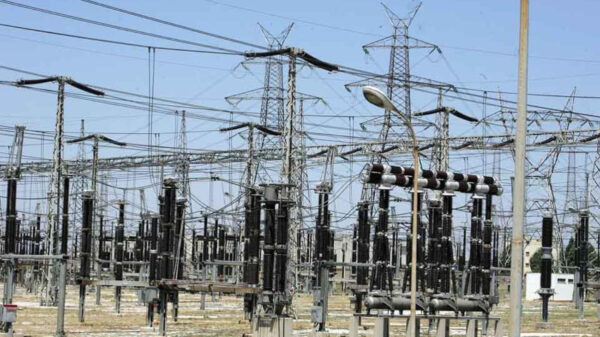Europe Editor
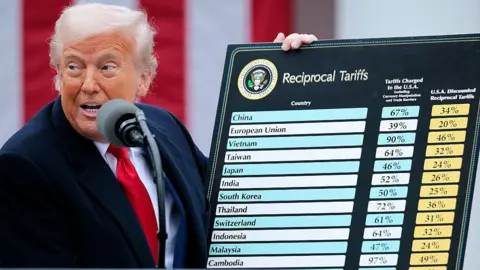 Getty Images
Getty ImagesFundamentally wrong, was how Germany’s outgoing chancellor, Olaf Scholz, described the new Trump tariffs.
A unilateral attack – that was the view of Spain’s Prime Minister Pedro Sánchez.
French President Emmanuel Macron called them brutal, unfounded and certain to have a “massive impact” on the European economy.
He convened an emergency meeting with representatives of French businesses most affected by the newly announced 20% tariffs on EU goods sold to the US and issued a call to arms to European business “not to invest in America for some time until we have clarified things”.
“What message would we send by having major European players investing billions of euros in the American economy at a time when [the US] is hitting us?” he said.
For France it’s wine, champagne and the aeronautical industry, for Germany it’s cars, and for Italy it’s luxury goods. It’s well known these sectors sell well abroad and now risk being clobbered by US import taxes.
Overall, the chemicals, machinery and equipment industries in the EU are seen as the most vulnerable to the tariffs.
But dig a little deeper and there are other EU sectors, reliant on the US market, that could come as a bit of a surprise.
French cognac, generally dismissed as an old person’s tipple in Europe, is the booze of choice for many American rappers, playing a prominent role in the music and lifestyle of stars like Jay-Z, 50 Cent and Snoop Dogg. More than 40% of French brandy is exported to the US.
Spain exports a lot of gas turbines to the US, alongside tonnes of olive oil.
Which EU countries are most exposed?
When we look at which EU countries are most exposed to the US in terms of GDP, the picture is also not quite what you might imagine.
Ireland is highly dependent on the US in terms of goods and services. Those exports – a lot linked to the pharmaceutical industry (which is currently exempt from the 20% tariffs, until the US boosts its own production) and also tech – make up a fifth of Ireland’s GDP.

 Getty Images
Getty ImagesCyprus, Luxembourg and Malta are more exposed than the EU average in terms of services exports.
Belgium, the Netherlands and Slovakia are in a similar position when it comes to goods.
Germany has a greater exposure to the US than the other major EU economies, at over 5% of GDP, followed by Italy (about 4%), France (3%) and Spain (just over 2%). These figures were collated in 2024 by CaixaBank research based on Eurostat figures for the previous year.
Will the EU retaliate?
The response to the new US tariffs is being coordinated at EU HQ in Brussels. The European Commission deals with all overarching trade matters for the bloc’s members.
Commission President Ursula von der Leyen claims they hold “a lot of cards”, including the strength to negotiate and the power to push back.
The US economy is mighty. It makes up 25% of global GDP.
But the EU single market of 450 million people (the biggest single market in the world) stands very close in size at 22% of global GDP.
So, yes, the EU can bite – hard – as well as bark when it comes to retaliating against Donald Trump’s tariffs. Especially if, as EU figures have suggested, the bloc targets US services like Big Tech, possibly including Apple, Meta, Amazon and even Elon Musk’s platform X.
But that risks a new backlash by the Trump administration. And the EU wants to avoid upping the ante.
If you take politics into account, not just economics, the EU has less room for manoeuvre than you might think.
Take energy supplies, the EU has been buying US liquified natural gas (LNG) after it weaned itself off Russian gas following the full-scale invasion of Ukraine.
Tricky to reduce or heavily tax those imports. That would badly impact EU consumers, not only US industry, and it would worsen already dismal relations with the US.
Think of all the recent rows over defence spending and Ukraine. Aside from the economic hell the EU sees and hopes to avoid in the new Trump tariffs, the bloc also really wants to sidestep a trade war with the country that used to be Europe’s best friend.

 Getty Images
Getty ImagesSo, the Brussels plan is: threaten heavy retaliation, hope Donald Trump is persuaded to negotiate, then pray he’ll stage a U-turn on tariffs.
The EU’s trade commissioner, Maros Sefcovic, says he’s speaking to his US counterparts on Friday. It’s an opening gambit. The EU is in no rush to retaliate.
What could the EU offer the US in a negotiation?
The Trump administration has ruled out any country negotiating its way out of the new tariffs before they become live this weekend. But after that, what could the EU offer the US president to persuade him to back down?
Trump is incandescent about the EU’s massive trade surplus. It sells far more goods than it buys from the US. The surplus for 2024 was around $200bn (€180bn; $153bn).
It’s the other way round when it comes to services – the US sells far more to the EU than the other way round. That is why the EU thinks its main retaliatory leverage against the US would lie in services, like banks and big tech.

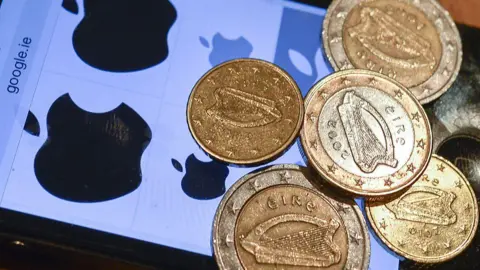 Getty Images
Getty ImagesTo redress the goods imbalance, the EU could offer to buy more LNG from the US, or more military equipment, following its pledge to Washington to do more for its own security.
But that would break a different EU promise – to boost withering European arms industries by trying to buy EU when re-arming EU countries. It is something the US has already objected to, so that’s tricky.
Brussels could also cut direct and indirect tariffs on US goods. It could lose quotas on US agricultural produce.
It would be hugely reluctant to comply with another US ask: to water down its much-trumpeted digital regulations, aimed at limiting monopolies and placing restrictions on speech and content in the EU.
How bad can this all get?
How do you price in the possible collapse of the international trading system, EU officials ask.
European firms fret about their markets being flooded by cheap goods from non-EU countries that are also hit by Trump tariffs and seeking to sell elsewhere.
The risk is very real when it comes to China. Trump is slapping more that 50% tariffs on Beijing when you add it all up.
Would the EU have to ratchet up its import duties on Chinese goods to protect itself and could that lead to an unintended trade war with China?
These are anxious and hugely uncertain economic times.
Which is why the European Commission says it also wants to focus on matters it can control – if EU capitals agree – and that is reducing internal barriers within the EU single market.
Those barriers, such as tax regimes, vary from country to country and impact the EU’s overall economic growth and competitiveness.
The IMF calculates they’re equivalent to a 45% tariff on EU manufacturing; 110% when it comes to services.
That is far higher than the tariffs now imposed on the EU by Donald Trump.
EU countries say they’re united in combating those. So far they’ve been divided over completing their own internal market.




